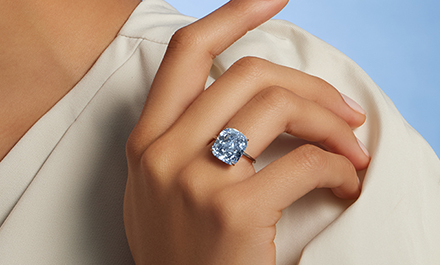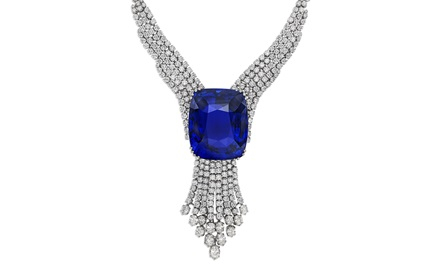With soaring gold prices, jewellers are focusing more on innovative techniques to keep luxury pieces within reach. Advanced manufacturing techniques are enabling more intricate, lightweight designs that keep costs under control while giving way to fresh creative directions.
New era for gold innovation
China’s gold jewellery industry is regaining its sparkle amid macroeconomic and geopolitical headwinds and high gold prices, thanks to the new and inventive Hard Pure Gold jewellery. Hard Pure Gold is produced using modern manufacturing and processing technologies in China – from mechanical production to AI-driven designs combined with traditional craftsmanship.
An industry standard for the Hard Pure Gold jewellery category introduced this year by the Ministry of Industry and Information Technology of China describes Hard Pure Gold jewellery as having a minimum hardness of “no less than 60HV on the Vickers hardness scale” and a purity level of “gold content of at least 990 per cent.”
These pieces can be crafted using techniques such as electroforming and lost-wax casting, among others. The minimum thickness requirement for hollow Hard Pure Gold jewellery is over 0.10mm.
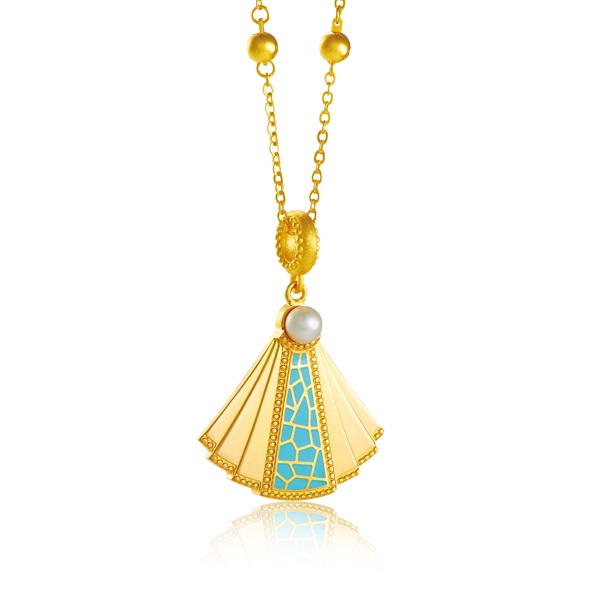
Hard Pure Gold pendant (Photo courtesy : World Gold Council)
Roland Wang, regional CEO (China) of the World Gold Council (WGC), revealed that Hard Pure Gold jewellery has become the fastest-growing product category in China in the last two years, thanks to its appeal and affordability. It is expected to be a major growth engine in the future.
“Hard Pure Gold allows for lightweight but visually striking pieces,” Wang explained. “A 2- to 3-gram Hard Pure Gold piece can appear every bit as substantial as a traditional piece that might require double the material. As gold prices climb, Hard Pure Gold’s affordability becomes especially attractive to younger consumers.”
He also cited the immense creative possibilities of Hard Pure Gold jewellery. The metal’s hardness allows designers to craft intricate and unconventional pieces, even combining pure gold with gemstones and other materials.
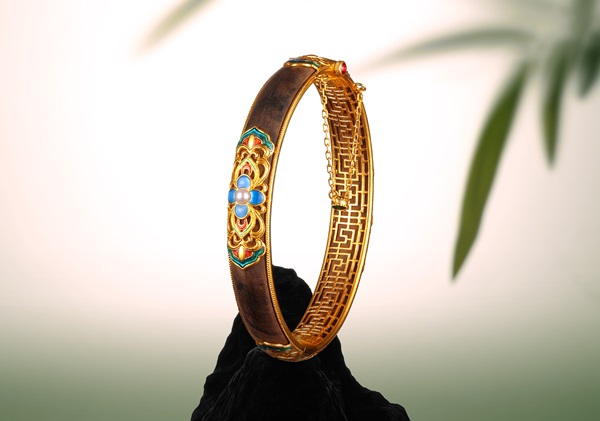
Gold jewellery featuring wood by Shenzhen Yuehao Jewellery Co Ltd
Hong Kong Chaozun Jewelry Ltd, which specialises in 24-karat hard pure gold jewellery, harnesses cutting-edge technologies, including cyanide-free electroforming and high-precision machinery combined with 3D modelling, to produce their gold creations such as the signature traditional Chinese Lion Collection.
“We developed our own cyanide-free hard gold formula that enables our gold pieces to achieve up to 150HV on the Vickers hardness scale and allows us to craft intricate details on gold pieces,” said Wing Chan, the company’s general manager.
Shenzhen Yuehao Jewellery Co Ltd, for its part, incorporates unconventional materials such as wood and feathers into hard pure gold jewellery, resulting in strikingly modern and refined designs.
A standout collection blends mother-of-pearl inlay and feather appliqué with innovative techniques, seamlessly matching the vibrancy of plumage with the glamour of gold.
Platinum jewellery transformation
Technological advancements, meanwhile, are also critical to producing new types of platinum jewellery, with breakthroughs in 3D printing and manufacturing processes yielding fresh contemporary designs.
Platinum Guild International (PGI) CEO Tim Schlick told JNA, “The past two years have witnessed more progress in platinum technology and innovation than the last two decades. We now help the trade overcome manufacturing and design challenges, bringing platinum on a par with other precious metals, so they can capitalise on unique growth opportunities.”
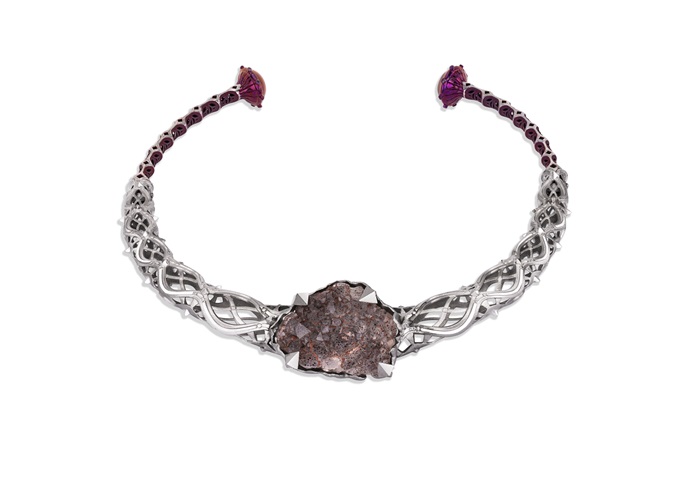
Torc of the King of the Mountains in 3D-printed platinum with Renfrewshire quartz stones from the Tùsaire Collection by Maeve Gillies
Tùsaire by Scottish-American jewellery designer Maeve Gillies is the first 3D-printed platinum-based jewellery collection to be launched commercially. Aptly named for the Scottish Gaelic word for “pioneer,” it features 30 one-of-a-kind jewellery pieces made from platinum and titanium, including torc necklaces, bracelets, earrings and rings.
PGI said the launch of the Tùsaire Collection demonstrates the decorative, scale and structural potential for 3D-printed platinum jewellery. Advances in 3D printing and precious metal powder technology enabled the crafting of intricate, unique shapes in platinum such as lattices, hollow structures and detailed textures. These were previously impossible to achieve, given that platinum is traditionally a heavier and denser metal.
“We needed to put 3D printing of platinum to the test, to identify the advantages and challenges, in the hope of expediting the technology’s application in making precious jewellery and its ability to create novel designs and experiences. There is no doubt additive manufacturing will be very important for the future of jewellery as it unlocks so many new possibilities,” said Schlick.
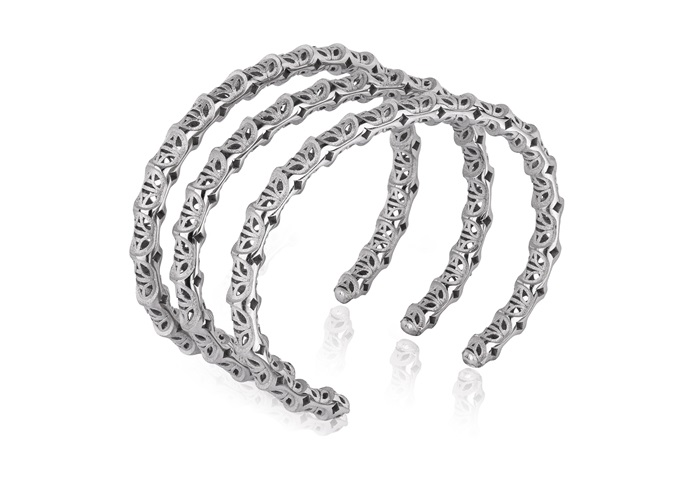
Platinum Cuffs of the Dawn Prince from the Tùsaire Collection by Maeve Gillies
Pino Aliprandini, meanwhile, developed a platinum electroforming bath that allows layers of up to 150 microns. This enables the production of lighter platinum jewellery as well as more intricate designs such as chunkier styles and thinner wedding bands, among others.
There is no doubt that technological advances will be vital in unlocking new levels of creativity. These, in turn, redefine the meaning of luxury as not just about rarity and brilliance, but more so about innovation, wearability and accessibility for a new generation of jewellery consumers.










